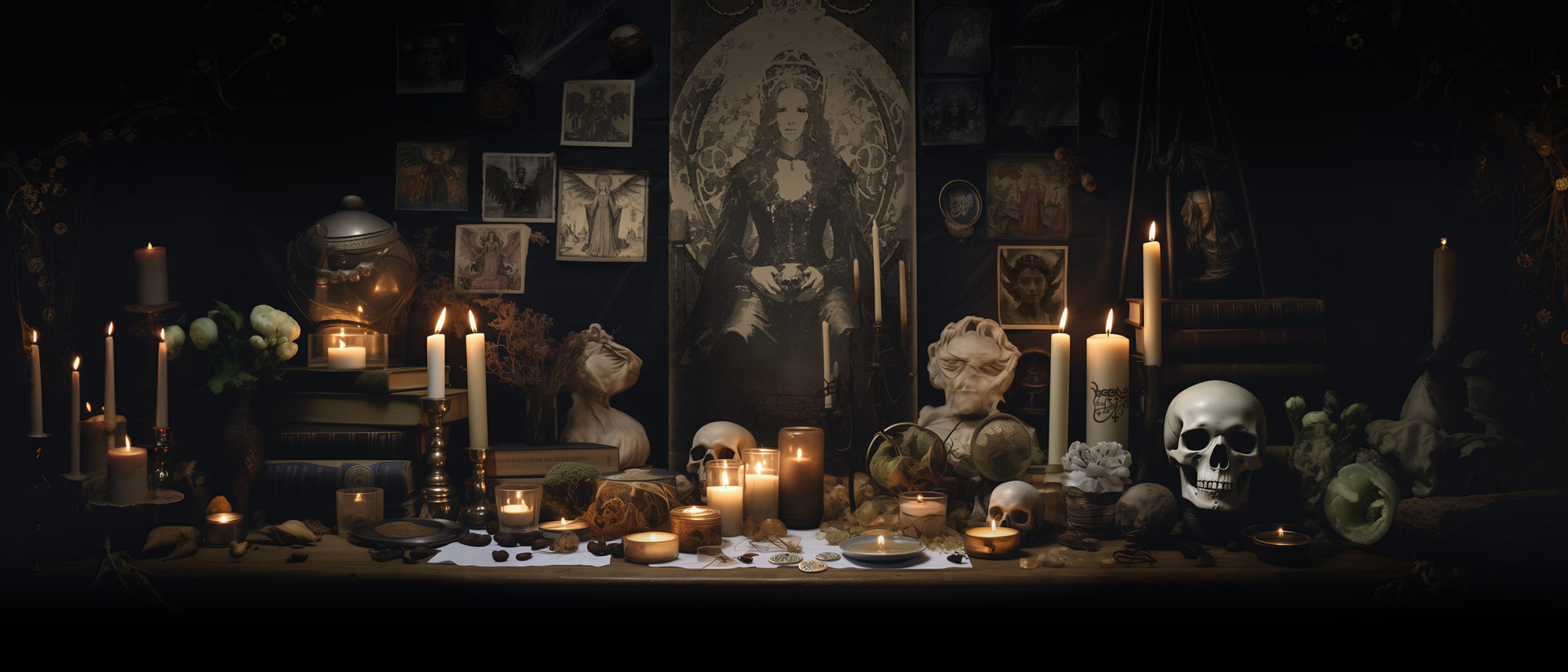Meet The Duchess of Death, Riches & Eloquence
Within the darkness of myth and shadows of the hidden, there’s a deity figure as powerful as She is easy to work with: Bune.
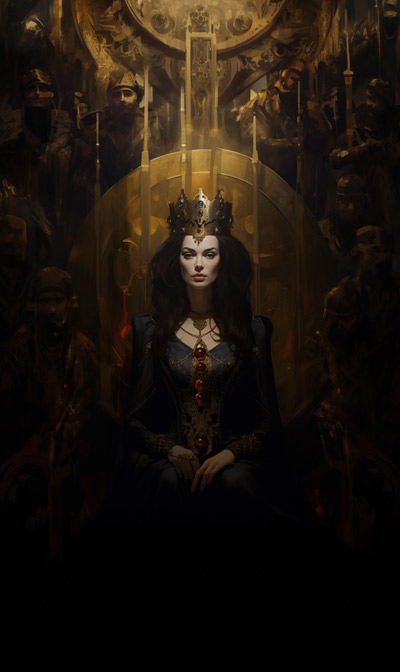 A grand duchess in the ‘infernal’ hierarchy, Her name is forefront among those who seek both literal and figurative treasures, knowledge, wit, charisma and insight into the whispers of the past.
A grand duchess in the ‘infernal’ hierarchy, Her name is forefront among those who seek both literal and figurative treasures, knowledge, wit, charisma and insight into the whispers of the past.
Her lore is as fascinating as it is complex, with Her presence seen through centuries as a guardian of graves, wealth-bringer, master of the necromantic arts, and a muse for the articulate.
Bune, a shape-shifting patroness with a dragon’s might and a sage’s wisdom, straddles the liminal spaces between living and dead, promising abundance and acumen to those who walk Her path.
This page is a look into the many different persona of Lady Bune — an exploration of Her historic enigma, Her portrayal across cultures, and Her role in contemporary spiritual practices.
This is the realm of Queen Bune, where ancient texts and modern interpretations paint a portrait of a being as benevolent as She is misunderstood, and as powerful as She is generous.
Bune Overview
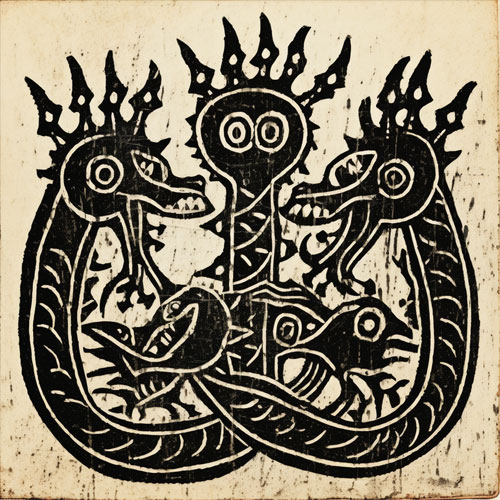 Bune is a complex entity whose origins and attributes span both traditions and epochs. As a being of ancient lore, She commands the deep respect of those who are familiar with Her diverse aspects and vast powers.
Bune is a complex entity whose origins and attributes span both traditions and epochs. As a being of ancient lore, She commands the deep respect of those who are familiar with Her diverse aspects and vast powers.
Her depictions vary — from a wise dragon to a dignified woman, merging strength with eloquence and wisdom.
To the uninitiated, Bune might appear to be simply a mythological character, a symbol of ancient people’s attempts to understand forces beyond their comprehension. However, to those who look deeper into Her narrative, She represents much more.
Bune is often associated with the afterlife — not merely as a guide of souls but as a sovereign of transformation and communication between realms. It is Her unique role as both a nurturer of abundance and a facilitator of spectral wisdom that sets Her apart in the writings of the mystical and the arcane.
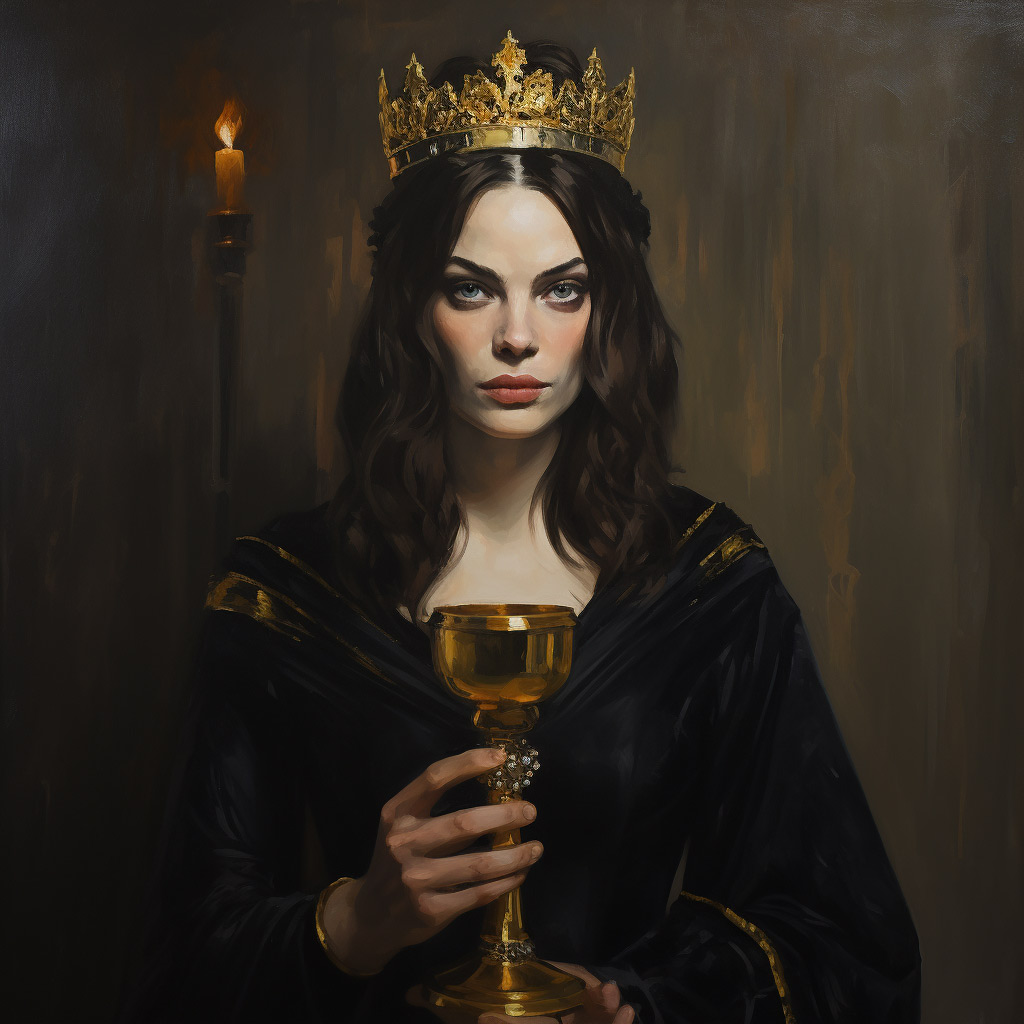 Historical inferences see Her as a grand duchess within the ‘infernal’ ranks, orchestrating both the movements of spirits and the flux of riches with equal aplomb.
Historical inferences see Her as a grand duchess within the ‘infernal’ ranks, orchestrating both the movements of spirits and the flux of riches with equal aplomb.
The Goetia ascribes to Her the power to bring about eloquence and wisdom, offering answers true to those who seek Her counsel. Yet, Her powers are not limited to the wealth of material gain; they extend into gifting the richness of knowledge and the oratory arts, making Her a patron for both the scholar and the merchant.
In contemporary contexts, Bune’s legacy continues to grow and thrive as ever more discover Her, thanks to modern technologies such as video sharing, chat and online discussions – making Bune’s world as vibrant as ever.
She is seen not just as a goetic figure but as an archetype of empowerment, integration, and growth. Her presence is invoked not only for the acquisition of wealth, but also for personal development and mastering the art of communication.
Those who call upon Her do so with a vision to enrich their lives in a balanced and harmonious fashion, aligning material success with spiritual insight.
Understanding Bune requires an appreciation of Her dualities — Her ability to dwell in light and shadow, offering Her support to the seekers of truth and prosperity.
As such, She is a testament to the belief that enlightenment and abundance can coexist, guiding Her followers towards a life where every word is weighed in gold, and wisdom lights the path to enduring affluence.
Significance across traditions
Bune’s enigmatic presence permeates several esoteric traditions, each interpreting Her distinct powers and lore through their unique lens.
In Wicca, Bune is often honored as a goddess of death and transformation, aligning Her aspects with the Wheel of the Year, which acknowledges life, death, and rebirth. Her energy is invoked during Samhain, the time when the veil between worlds is thinnest, facilitating communication with the ancestors and the spirit world.
In broader Pagan circles, Bune is recognized for Her dominion over the earth and fire elements. She is a deity of abundance and prosperity, often celebrated during harvest festivals and rituals seeking material and spiritual bounty. Her symbols, like the dragon and the dog, align Her with protection and guidance, while Her colors and metals are used in ritual craft to attract Her favor.
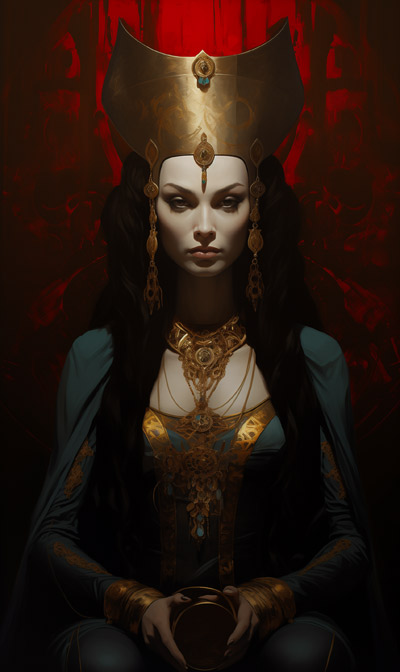 Demonolatry, which regards demons as pre-Christian gods deserving of reverence, places Bune in high regard as a powerful and wise spirit. Followers approach Her through ceremonial magick, regarding Her as a potent patroness capable of influencing the physical and metaphysical realms to bring about change, wisdom, and of course affluence.
Demonolatry, which regards demons as pre-Christian gods deserving of reverence, places Bune in high regard as a powerful and wise spirit. Followers approach Her through ceremonial magick, regarding Her as a potent patroness capable of influencing the physical and metaphysical realms to bring about change, wisdom, and of course affluence.
In the context of modern occultism, Bune moves far beyond Her Goetic legend to assist with the principles of successful communication and business acumen. Entrepreneurs drawn to occult symbology may use Her sigil and enn as focal points for meditation or as part of more complex rituals aimed at business success.
Although these practices vary widely, the core recognition of Bune as a force for transformation and eloquence remains constant. She is seen as a bridge between worlds, a guide, and a teacher who can impart the skill of clear articulation and the manifestation of one’s will – into reality.
This duality of riches and intellect puts Bune in a unique position across spiritual traditions, respected by those who seek knowledge and abundance with equal fervor.
Next we will look further into Her historical origins, tracing Her evolution from ancient texts to contemporary interpretations. Recognizing that knowledge is power, our scope extends to examining Bune’s historical role in various pantheons and Her transformation into a complex figure within occult practices. We will of course look at the Goetic traditions, but also inconsistencies in historical translations, before focusing on Bune’s contemporary resurgence in popular culture and modern magickal communities.
Following Bune’s attributes across different cultures and epochs, it is our aim to give a balanced perspective that honors both historical context and the subjective and vastly differing experiences of those who align with Her energies. From demonology practitioners to neo-pagan devotees, we hope to offer some insights for what is quite a diverse audience!
Historical Overview
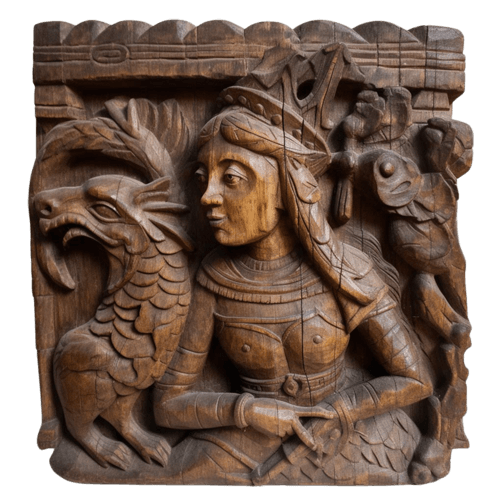 The shape and form of Bune can be seen developing throughout the centuries, where a written narrative begins in Goetic literature – as the name ‘Bune’ originated as a prominent deity in the grimoires of the 1500s.
The shape and form of Bune can be seen developing throughout the centuries, where a written narrative begins in Goetic literature – as the name ‘Bune’ originated as a prominent deity in the grimoires of the 1500s.
At a time when any deity outside of Christianity was seen as a demon, Bune was depicted as a powerful duke of Hell, commanding over thirty legions of spirits. Yet, this Goetic image is but one thread among many in Her ancient lineage.
Bune’s aspects can be seen to bear striking resemblances to deities going back millennia, from Wadjet, the serpent goddess of Lower Egypt, symbolizing sovereignty and protection, and they can invoke similarities to the revered deities of Mesopotamia; Ishtar, the goddess of fertility, love, and war, and Ereshkigal, the queen of the underworld.
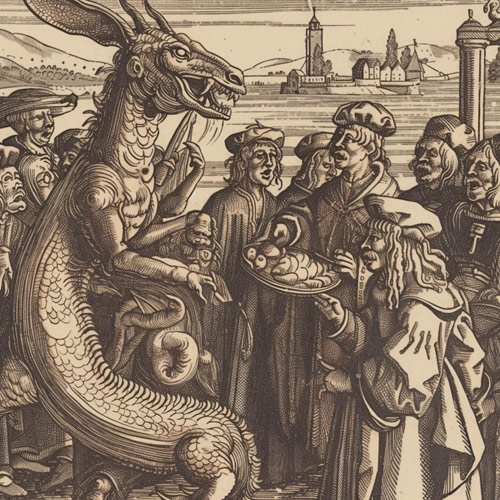 These connections point to a rich and diverse history where Bune’s archetype represents a confluence of death, abundance, and eloquence.
These connections point to a rich and diverse history where Bune’s archetype represents a confluence of death, abundance, and eloquence.
The evolution of Bune’s character soon develops, going beyond the demonic of the goetic texts and into the realm of divine reverence, exhibiting how interpretations of such entities are shaped by cultural, religious, and historical lenses.
Bune’s portrayal can be traced from feared demonic figure to a respected, even venerated, aspect of ancient divinity. By examining the threads conecting Bune to various mythological figures, it’s possible to glimpse a complex history of a being that has influenced and been influenced by human belief and ritualistic practice throughout the ages.
Origins of Bune in historical texts
Bune first surfaces in the annals of occult literature with the birth of the Goetic texts, writings which offer a veritable census of the demonic aristocracy of the time.
 These grimoires, primarily concerned with the practice of summoning, commanding, and negotiating with various spirits, mark the first mention of Bune by name — a name that would come to be revered in esoteric circles. Intriguingly, the texts portray Bune not merely as a demon, but as a benevolent entity adept at eloquence and necromancy, with a complexity well beyond typical malevolent caricature.
These grimoires, primarily concerned with the practice of summoning, commanding, and negotiating with various spirits, mark the first mention of Bune by name — a name that would come to be revered in esoteric circles. Intriguingly, the texts portray Bune not merely as a demon, but as a benevolent entity adept at eloquence and necromancy, with a complexity well beyond typical malevolent caricature.
These early texts are a critical juncture in Bune’s historical narrative, providing us with the earliest written blueprints of Her abilities, hierarchies, and the manner in which She could be conjured.
Though the origins of the texts themselves are shrouded in the mystery of medieval esotericism, and subsequent translation and mistranslation, their impact on the current understanding of Bune is indisputable.
By offering insights into the rituals and purposes of Her invocation, they paved the way for a deeper comprehension of Her role within occult traditions. They also set the stage for future interpretations and adaptations of Her figure in various cultural and magical practices.
Evolution of Bune’s name and titles
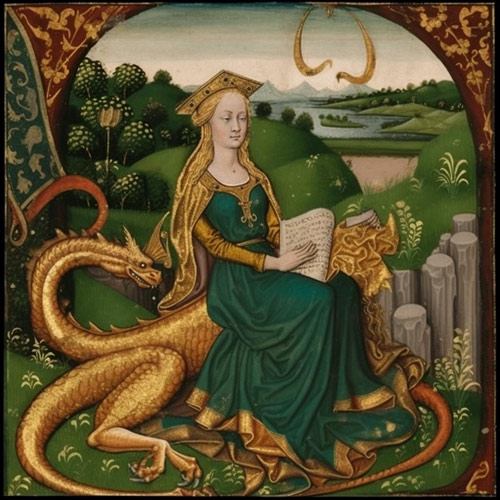 The nomenclature associated with the spirit now widely recognized as Bune has undergone a fascinating evolution, reflective of a widespread and varied engagement with Her across cultures and languages.
The nomenclature associated with the spirit now widely recognized as Bune has undergone a fascinating evolution, reflective of a widespread and varied engagement with Her across cultures and languages.
‘Bune,’ as She is most commonly known, is only one permutation of Her name. Other variants such as ‘Bim’ and ‘Bime’ possibly stem from transliterations or copyist errors over time, while the phonetic ‘Bunay’ and ‘Byune’ exhibit linguistic adaptations which mirror the widespread variations that can be seen in Her very character.
The French ‘Buné,’ with its accented terminus, lends an air of exoticism and specificity to many a practitioner’s mind, and comes from the deity’s presence in the explosion of French occultism.
The titles of Bune have also evolved in tandem with Her name, each bestowing upon Her a distinct rank and sphere of influence within the infernal hierarchy. As ‘Great Duchess,’ She assumes a nobility that commands respect and denotes a regal authority over a substantial legion.
The title ‘Queen’ elevates Her status further, suggesting sovereignty and a broader dominion that extends beyond the underworld’s dukedoms.
Meanwhile, ‘Lady Bune’ presents a slightly more approachable aspect, perhaps indicative of the more personal and intimate interactions followers or summoners might seek with Her.
Together, these titles not only denote rank but can also function as invocation keys, unlocking different aspects of Her nature and the potential benefits such engagements may yield.
Associations in ancient culture
The study of Bune within the broader context of ancient religions and cultures unveils an evolution filled with deific overlaps and synchronisms.
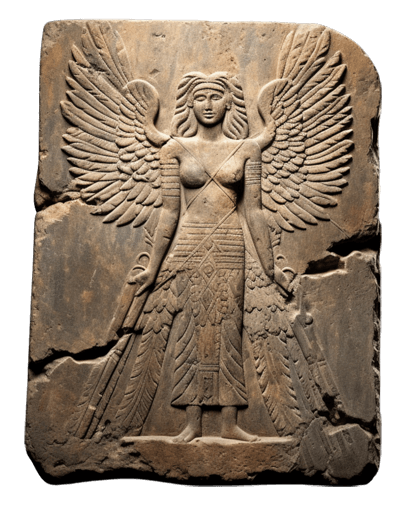 Specialists in occult traditions and practitioners of demonolatry often draw parallels between Bune and an array of goddesses who reign over life, death, wealth, and wisdom.
Specialists in occult traditions and practitioners of demonolatry often draw parallels between Bune and an array of goddesses who reign over life, death, wealth, and wisdom.
Ishtar and Inanna, the Mesopotamian goddesses of love and war, also embodied the duality of life’s beginning and end — a theme mirrored in Bune’s encompassment of death and richness. Ereshkigal, as the queen of the underworld, shares Bune’s dominion over the dead, encapsulating a similar dark sovereignty.
In the Hindu pantheon, Lakshmi‘s governance over fortune and abundance finds a parallel with Bune’s role as a bestower of wealth. Similarly, Benzaiten and Daikokuten from Japanese belief systems symbolize prosperity and are likened to Bune’s wealth-attracting attributes.
The origins of Bune’s identity can also be seen in the field of Egyptian mythology, where She finds a significant echo in the figure of Wadjet, the venerated cobra goddess. Some scholars and occultists propose that Bune and Wadjet are mirror images of each other, with Bune’s attributes of wealth, eloquence, and necromancy reflecting Wadjet’s domains of protection, justice, and sovereignty.
The goddesses Fortuna and Abundantia, known respectively for luck and plenty, echo Bune’s aspects of prosperity and bounty. Hekate‘s association with necromancy and pathways aligns with Bune’s reputed ability to bridge the living and the dead. And Lilith‘s embodiment of independence and power touches upon the darker, more assertive qualities seen in depictions of Bune.
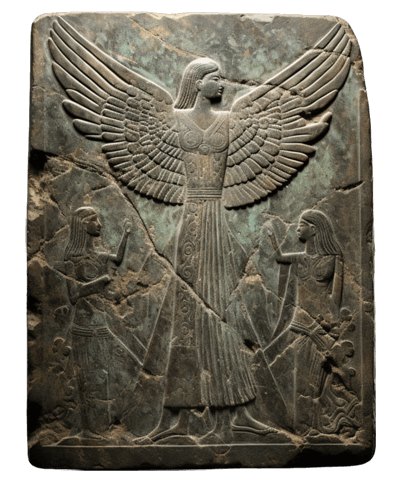 Each of these deities, in their respective cultures, carries elements that seem to flow seamlessly into the complex persona of the Bune we currently know and love.
Each of these deities, in their respective cultures, carries elements that seem to flow seamlessly into the complex persona of the Bune we currently know and love.
Such associations do not imply direct lineage or a simple one-to-one correspondence; instead, they point to a shared archetypal space where these powerful female figures intersect. The collective attributes of these goddesses — encompassing autonomy, strength, and the patronage of life’s transitions — can create a multidimensional understanding of Bune that goes beyond and escapes the straitjacket of a single mythological framework.
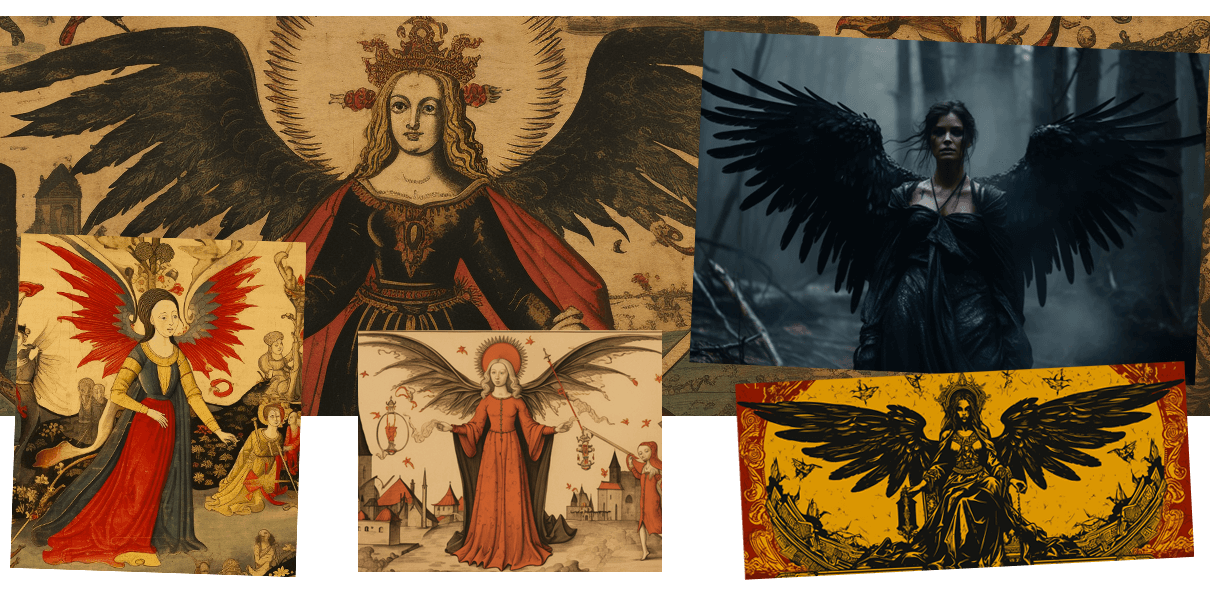
Depictions and Descriptions
The enigmatic figure of Bune has been captured through various lenses of mystical and ceremonial tradition, and She can be presented as a being as multifaceted as the cultures She has touched.
The array of depictions and descriptions of Bune, ranging from the ominous and foreboding images in grimoires to later symbolic attributes and associations, paint a broader picture of Her powers and presence.
What becomes clear, are the varied physical descriptions that have both enticed and confounded occultists – the evolution and consistency of Her imagery across timelines is fascinating.
Symbolic attributes such as animals, colors, and elements offer us insight into the deeper meaning behind Bune’s influence and how these characteristics reinforce Her roles in the metaphysical hierarchy.
Through examining these depictions, we can glean more than mere physical portrayals; we can unearth layers of symbolism that go beyond the immediate, inviting a more profound contemplation of Bune’s essence and Her place within the esoteric world.
Physical descriptions from grimoires
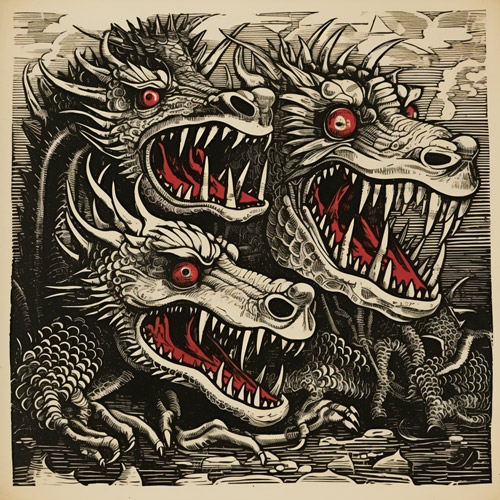 Within the dusty pages of ancient grimoires, Bune is cloaked in the dark mystique of the underworld, portrayed with striking imagery that brings about a sense of awe and somber reverence.
Within the dusty pages of ancient grimoires, Bune is cloaked in the dark mystique of the underworld, portrayed with striking imagery that brings about a sense of awe and somber reverence.
The Lesser Key of Solomon, a seminal work of Goetic demonology dating back to the 16th century, provides one of the earliest and most detailed accounts of Her appearance.
Here, She is presented as a great Duke of Hell, commanding thirty legions of spirits, and appearing as a dragon with three heads: one like a dog, another like a griffon, and the third bearing the visage of a man. This triadic form represents Her dominion over death, wealth, and wisdom, reflecting the complex nature of Her influence.
As time progressed, the interpretation of Bune’s form adapted with the lenses of both contemporary society and esoteric shifts.
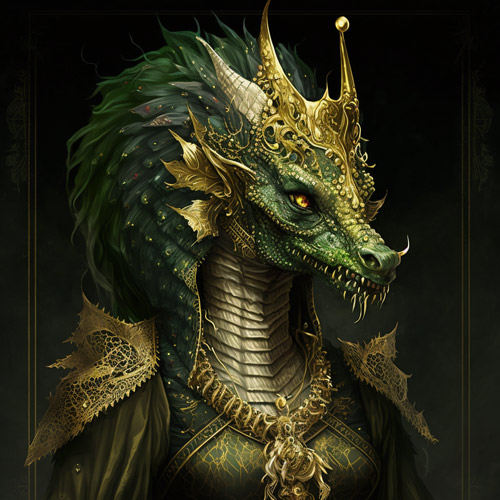 Later grimoires and texts often attempted to ‘modernize’ Her depiction, sometimes aligning Her draconian imagery with more nuanced understandings of dragons as symbols of power and subterranean knowledge.
Later grimoires and texts often attempted to ‘modernize’ Her depiction, sometimes aligning Her draconian imagery with more nuanced understandings of dragons as symbols of power and subterranean knowledge.
While the core attributes remained, the emphasis on Her more human aspects took precedence in efforts to align with the changing views of demonic entities from solely malevolent, to misunderstood, and eventually the benevolent forces Bune truly brings to a pathworker’s table.
Bune’s Fair Forms: Adaptations to Belief and Practice
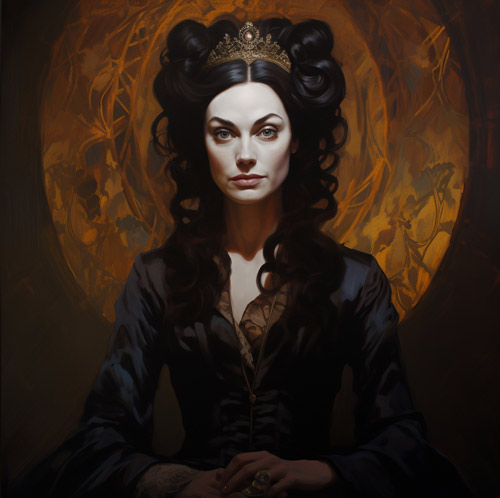 Across the broad spectrum of Her manifestations, Bune exhibits a unique chameleon-like ability to assume forms that reflect the needs, cultural backgrounds, and expectations of Her devotees.
Across the broad spectrum of Her manifestations, Bune exhibits a unique chameleon-like ability to assume forms that reflect the needs, cultural backgrounds, and expectations of Her devotees.
These ‘fair forms,’ a term that denotes Her more human-like appearances, are multifaceted and serve to establish a more personal and less intimidating connection with those who seek Her guidance.
By appearing in a guise that resonates more closely with human aesthetics and cultural archetypes, Bune fosters a sense of familiarity and kinship, making the spiritual exchange feel less like a transaction and more like a collaboration with a powerful ally.
Bune’s ability to shape-shift into forms aligning with the beliefs and locations of the caster speaks volumes about Her role as a bridge between the known and the unknown, the living and the dead. Far from the frightening draconic depictions often associated with Goetic entities, Bune’s fair forms seem to be a testament to Her evolution with human civilization, embodying the shared history and personal bonds She has formed with humanity.
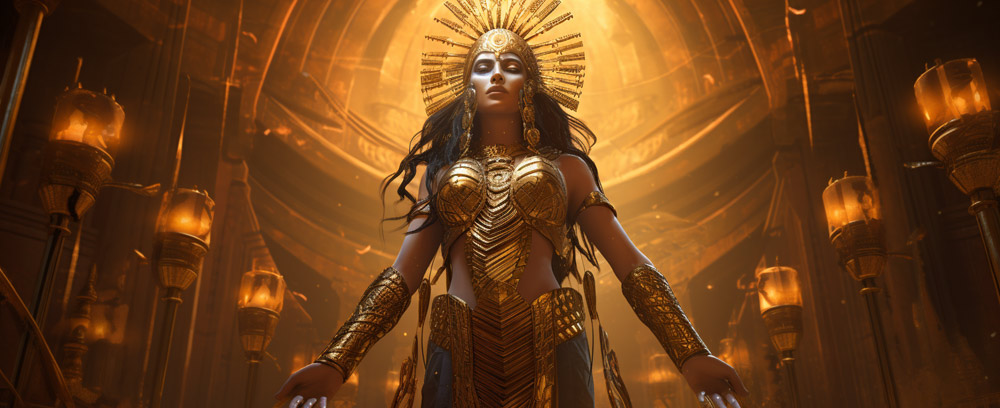
Variations of Bune’s Fair Forms
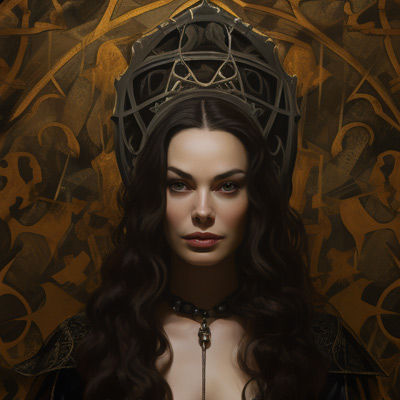 Dark Bune
Dark Bune
A vision in monochrome, Dark Bune mirrors aspects of Hekate, presenting an aesthetic of nobility entwined with the somberness of necromancy. Her eyes shimmering with power, signal that even in Her stillness, She is a force to be reckoned with.
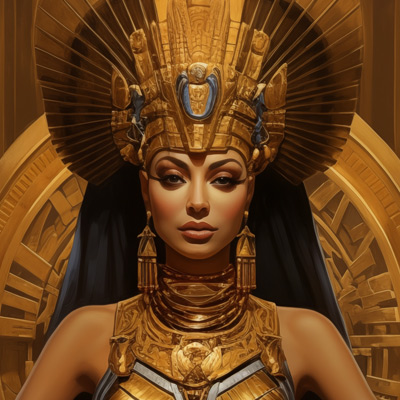 Egyptian Bune
Egyptian Bune
Egyptian Bune visually reaffirms her historical significance, adopting the splendour of ancient dynasties. Her regality is not just in bearing but also in the wisdom She imparts, serving as a living link to the past’s glories and knowledge.
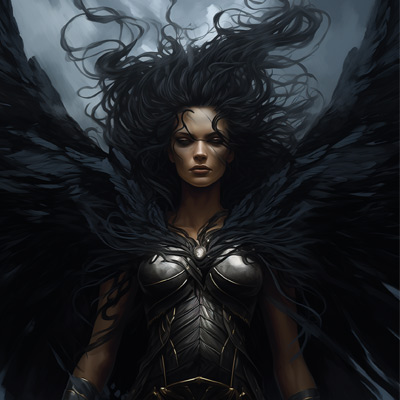 Mesopotamian Bune
Mesopotamian Bune
In a display reminiscent of Ishtar, this form emphasizes Bune’s sovereignty over life’s transitions, with enormous wings symbolizing Her mastery over the vast expanse between realms.
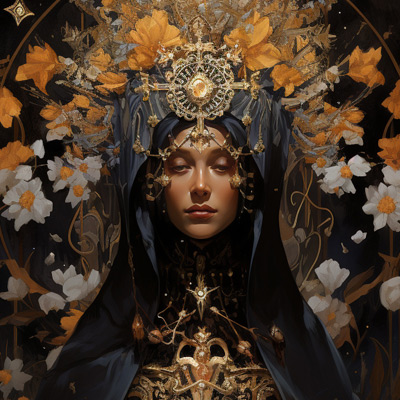 Mother Bune
Mother Bune
Embodying a Catholic Madonna’s nurturing aspect, Mother Bune brings forth comfort and care, with this form being especially prevalent in regions steeped in Catholic iconography and lore.
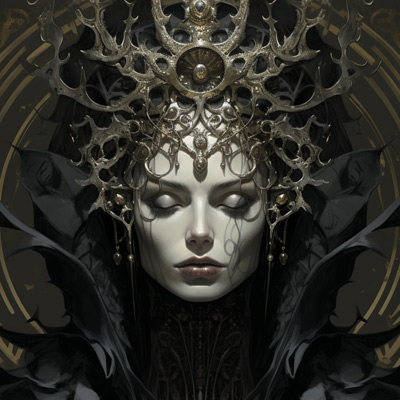 Midnight Bune
Midnight Bune
Despite typically being seen as a daytime entity, as an envoy to the nocturnal and the hidden, Midnight Bune’s domain is where the veil is thinnest, and Her pale, translucent form is a testament to Her intimacy with the enigmas of the afterlife.
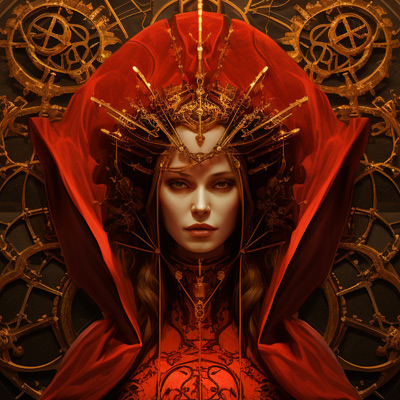 Red Bune
Red Bune
Cloaked in red, this manifestation of Bune is a bold statement of Her vibrant energy and passion, representing the fire that drives change and the will to act.
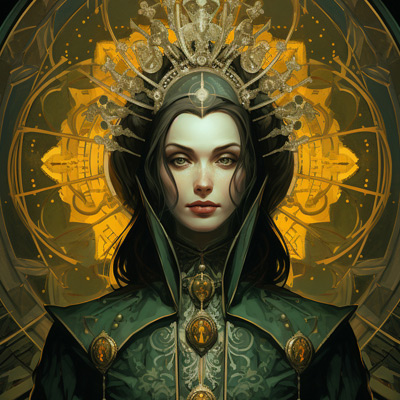 Green Bune
Green Bune
Dressed in green, She echoes the fertility and growth associated with Her wealth-giving aspect, akin to the flourishing abundance of nature itself.
Adaptive Manifestations
The variance in Bune’s appearance is not arbitrary; it is a profound statement on the flexibility and personalization of the spiritual practice.
Bune, in Her fairness and empathy, customizes Her presence to the individual’s cultural context and personal needs. This malleability not only makes Her more accessible but also highlights the dynamic nature of the occult belief systems where perception and faith can, and do, directly influence experience of the divine or the infernal.
By presenting Herself in forms that practitioners see some of themselves in, Bune can create a powerful emotive resonance that enhances the efficacy of Her work.
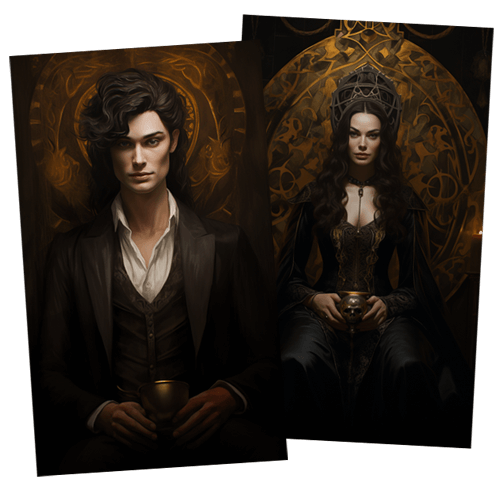 The evolution of Her visage throughout different cultures and eras stands as evidence of the depth of Her integration into human consciousness.
The evolution of Her visage throughout different cultures and eras stands as evidence of the depth of Her integration into human consciousness.
These fair forms of Bune, therefore, are not just a testament to Her willingness to communicate but also reflect the wide spectrum of human belief and the reciprocity that is central to acts of divine communion.
Symbolic attributes and associations
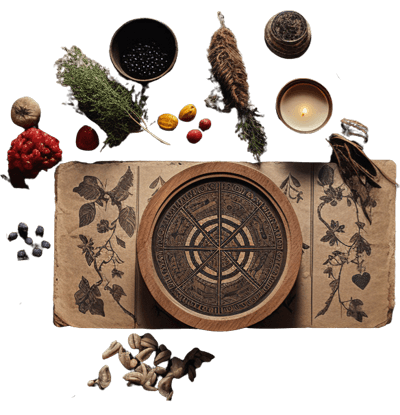 Bune’s associations cover a range of elements and symbols that contribute to Her multifaceted roles in esoteric practices.
Bune’s associations cover a range of elements and symbols that contribute to Her multifaceted roles in esoteric practices.
- Dates: Traditionally associated with the time between December 3rd and December 12th, as noted by Connolly and Tikaboo, this period is considered optimal for workings with Bune.
- Direction: West is often associated with the element of water, the setting sun, and the culmination of knowledge, which aligns with Bune’s dominion over death and the closure of cycles.
- Tarot: The 9 of Wands signifies perseverance and strength in adversity, mirroring Bune’s ability to offer endurance in pursuits of wealth and eloquence.
- Planet: Venus, the planet of love and abundance, relates to Bune’s association with prosperity and eloquence, enhancing the benevolent aspects of Her guidance.
- Metal: Copper, known for conducting energy, is symbolic of Bune’s role in facilitating the flow of communication and financial exchange. The affinity for gold underscores Her association with wealth.
- Element: Bune’s connection to the Earth, solidifies Her link to material wealth and stability, while Her ties to fire suggest transformative power and vision.
- Color: Green is the color of growth and renewal, resonant with the wealth-generating aspect of Bune. It also represents the earthy facet of Her dominion.
- Plant: The orange tree is symbolic of Bune’s refreshing and invigorating energy, encouraging abundance and the bright vigor in communication and financial dealings.
- Incense: Bune’s preferred fragrances of Sandalwood and Oud, with their deep and purifying qualities, are used to attract higher vibrations and facilitate meditation and requests during rituals.
- Zodiac: Sagittarius is the sign of exploration and higher learning, aligning with Bune’s attributes of seeking and disseminating profound wisdom.
- Planetary Alignments: The influences of Jupiter, Moon, and Sun denote expansion, intuition, and vitality, respectively—traits beneficial for business and wealth.
- Star: Sirius, the brightest star, symbolizes illumination and success, reflecting Bune’s power to enlighten paths to prosperity.
- Times: Corresponding with Her status as a Duchess, the times of dawn or noon are potent for rituals, reflecting new beginnings and the zenith of power.
- Zodiac Positions: Specific degrees in Taurus, Leo, and Sagittarius relate to periods of astrological influence, with Leo and Sagittarius being particularly potent for their direct correlations to Bune’s essence.
- Animals: Canines, dragons, and gryphons reflect loyalty, ancient power, and the guarding of treasures, qualities embodied by Bune.
- Candle Colors: A palette ranging from orange to gold through red and black encapsulates energies from creativity and intuition to the grounding and the profound mysteries She holds sway over.
- Essential Oils and Plants: Orange essential oil for its bright and invigorating energy, and angelica and bloodroot for their strong protective and magical properties are linked to Bune’s attributes.
- Trees: Citrus trees, particularly orange, are tied to abundance and the fruitful aspects of Bune’s patronage.
- Tarot Cards: The 5 and 9 of Wands or their equivalents in other tarot decks symbolize challenges overcome in the pursuit of one’s goals, aligning with Her guidance in navigating through obstacles.
- Spiritual Powers: Bune is sought for Her insights into business success, financial advice, money magic, as well as more esoteric practices such as necromancy and séance workings, highlighting Her role as a communicator between realms and Her command over material abundance.
By understanding and using these correspondences, practitioners are able to tailor their approach to working with Bune, ensuring respect and alignment with Her energies and the forces of the universe.
Text References and Translations
The texts from which we draw knowledge of Bune are rich with historical context, steeped in esoteric wisdom, but not immune to the influences and perceptions of their time.
As an entity referenced in several key grimoires, the study of Bune requires a careful examination of these sources and the variations that appear across translations.
Key passages from the Goetia and other grimoires
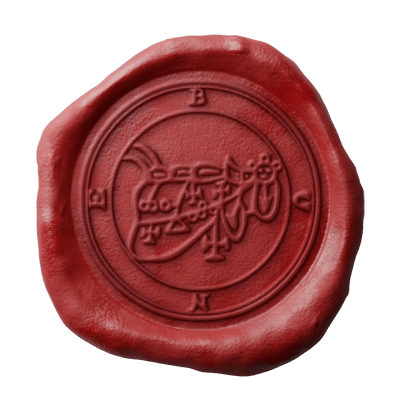 In examining the texts that reference Bune, particularly the Goetic writings of the 16th century and later, it’s important to recognize that translation is as much an art as it is a science.
In examining the texts that reference Bune, particularly the Goetic writings of the 16th century and later, it’s important to recognize that translation is as much an art as it is a science.
Words meant to convey the mystical and arcane are often subject to the translator’s own understanding and biases.
There was also a sexuality bias at the time, and Bune, like many other ancient deities subject to demonization was rewritten as male – a common practice in the 1500s.
27. Bune is a great duke who makes bodies come and go from place to place in another, and makes a rich home, and speaks haughtily before all people, and gives his true responses of what is asked of him; and has xxxv legions.”
— Livre des Esperitz (c.1500) Cambridge MS O.8.29
24. Bune is a great and a strong Duke, he appeareth as a dragon with three heads, the third whereof is like to a man; he speaketh with a divine voice, he maketh the dead to change their place, and divels to assemble upon the sepulchers of the dead: he greatlie inricheth a man, and maketh him eloquent and wise, answering trulie to all demands, and thirtie legions obeie him.”
— Pseudomonarchia Daemonum (1577/1583) Weyer
XXVI. Bune, a strong duke, who appears as a three-headed dragon, the heads being respectively those of a dog, griffin, and man. He has a pleasant voice; he changes the places of the dead, causes demons to crowd round sepulchres, gives riches, makes men wise and eloquent, answers questions truly.”
— The Book of Black Magic (1898) Waite
The Twenty-sixth Spirit is Buné (or Bim). He is a Strong, Great and Mighty Duke. He appeareth in the form of a Dragon with three heads, one like a Dog, one like a Gryphon, and one like a Man. He speaketh with a high and comely Voice. He changeth the Place of the Dead, and causeth the Spirits which be under him to gather together upon your Sepulchres. He giveth Riches unto a Man, and maketh him Wise and Eloquent. He giveth true Answers unto Demands. And he governeth 30 Legions of Spirits. His Seal is this, unto the which he oweth Obedience. He hath another Seal (which is the first of these, but the last is the best).”
— The Lesser Key of Solomon (1904) Mathers and Crowley
Some later written works on Bune stick with a demonic focus and masculine nature that originated with Weyer and his contemporaries, such as Ford:
Bune/Bime is a Duke, who appears as a Dragon with three heads – one like a dog, one as a bird and the other as a man with black eyes. Bune is a shade gatherer, under the form of Azrael -the Angel of Death. Bune gathers shades unto one place, or sepulcher that they may reside in your place of dwelling, gathering knowledge and impulses from beyond the grave in the dreaming state. Bune brings knowledge of how one may become better, and grow in experience and wisdom. He governs 30 Legions of Spirits.”
— Luciferian Goetia (2009) Ford
And Connolly, a true force in the modern revival of Demonolatry:
[Bune] gives truthful answers, he can part the veil between the living and the dead and gather the dead. He can give riches and make a magician wise and well-spoken. Bune is one of the Goetia’s Necromancy Daemons. If you have a medium ready to channel the dead, invoke Bune to keep order and peace during the séance. He can impart understanding and wisdom about the nature of death.”
— Daemonolatry Goetia (2010) Connolly
The Goetic texts, historical cornerstones for occult study, portray Bune as a male demon, a reflection of the prevailing attitudes towards gender and power in spirituality during the time they were written. Yet, this gender attribution has not gone unchallenged in modern esoteric discourse.
A growing number of contemporary practitioners view Bune through a far different lens, one that is more fluid and detached from the rigid dichotomies of traditional demonology. For these modern voices, Bune emerges as a benevolent goddess or daemon — a term reclaimed from its ancient Greek origins to denote a guiding spirit rather than a malevolent force.
This revisionist perception of Bune is informed by a paradigm shift away from the fear-driven demonization of the pre-modern era towards an embrace of the more balanced, often beneficial qualities that such entities can possess.
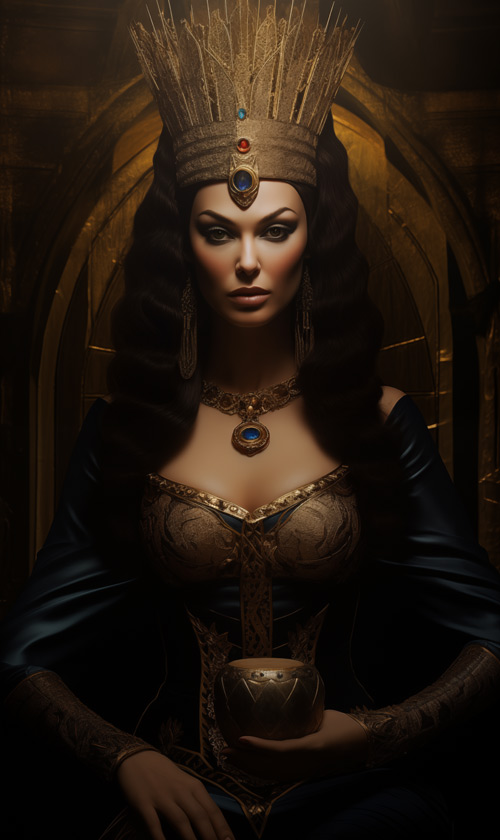 The inclination to see Bune as a force of good, or at least as neutral in countenance, is a significant move towards recognizing the true nature of deities and spirits in the occult.
The inclination to see Bune as a force of good, or at least as neutral in countenance, is a significant move towards recognizing the true nature of deities and spirits in the occult.
This contemporary re-envisioning of Bune corresponds with a broader trend of re-examining historical texts through the lens of cultural, historical, and spiritual context — acknowledging that ancient interpretations were often constrained by the knowledge and prejudices of their times.
Furthermore, Bune’s characterization varies widely across different belief systems.
Some equate Her with the concept of a djinn — a spiritual being from Islamic theology and Middle Eastern folklore known for their power and variable nature. Others regard Bune as an iteration of an ancient deity, thereby hinting at Her existence and reverence in pre-Goetic, possibly pre-Christian or even pre-Judaic traditions.
Such interpretations enhance Bune’s standing beyond the label of demon to that of a divine entity with potential for guidance, prosperity, and transformation.
This evolving understanding of Bune challenges practitioners to reconsider long-held beliefs about the spiritual entities cataloged in occult literature.
By approaching Bune as a figure outside of good-evil binaries and acknowledging Her more comprehensive roles and representations, contemporary practice is enriched. It allows for a more inclusive and spiritually nuanced engagement with entities that have historically been marginalized or misunderstood in the Western magical tradition.
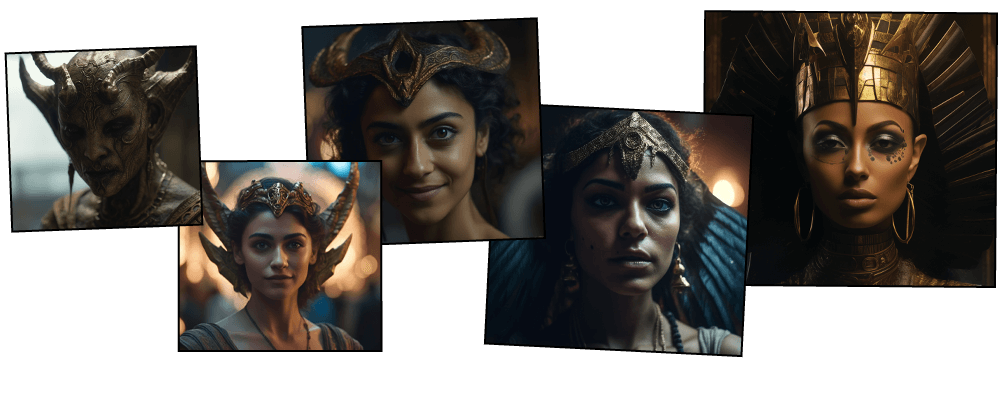
Inconsistencies in translation and interpretation
The dangers of purposeful or accidental mistranslations become starkly evident in the realm of occult literature.
During the 1500s and beyond, the translation of Goetic texts was heavily influenced by the prevailing religious and cultural biases of the time. Translators, working under the specter of ecclesiastical authority, may have skewed texts to reinforce the demonization of pre-Christian deities or the exoticization of magic and the supernatural.
Such alterations will significantly affect the intent and application of magical practice. Dramatic flourishes or exaggerated interpretations inserted for excitement or to align with church politics not only muddle the original content but also risk invoking the potent forces of these entities in ways that are misaligned with their true nature.
Moreover, they create a version of demonology that feeds on fear rather than respect, skewing the practitioner’s relationship with the spirits in question.
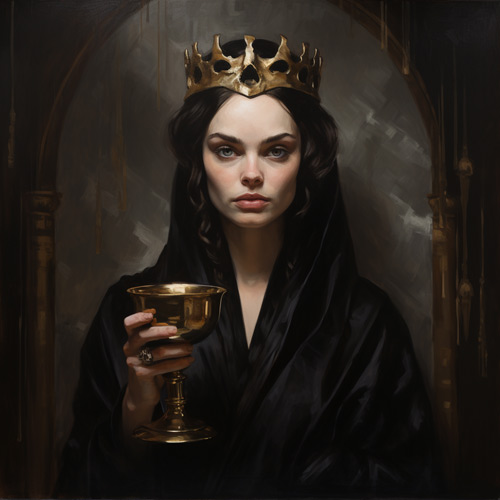 This not only underscores the importance of cross-referencing translations for a more accurate understanding but also illustrates how fear and sensationalism can taint the clarity and efficacy of esoteric practices.
This not only underscores the importance of cross-referencing translations for a more accurate understanding but also illustrates how fear and sensationalism can taint the clarity and efficacy of esoteric practices.
As an example, lets look at a single but very important element of Bune: Bune’s voice. In the quotes given above, it is described as “high and comely” and “a pleasant voice”
Yet reading the “Dictionnaire Infernal” (edition of 1863) Written by Jacques Auguste Simon Collin de Plancy and taking a deeper look at the “Pseudomonarchia Daemonum” (1583) Written by Johann Weyer, we begin to see a different story, and one which reflects strongly on our and a great many practitioners’ experiences; Bune doesn’t speak, rather She uses pictures, imagery and strong feelings:
Original Text from Dictionnaire Infernal :
Bune, démon puissant, grand-duc aux enfers. Il a la forme d’un dragon avec trois têtes, dont la troisième seulement est celle d’un homme. Il ne parle que par signes ; il déplace les cadavres, hante les cimetières et rassemble les démons sur les sépulcres. Il se vante d’enrichir et de rendre éloquents ceux qui le servent. Trente légions lui obéissent.
Les démons soumis à Bune, et appelés Bunis, sont redoutés des Tartares, qui les disent trèsmalfaisants. Il faut avoir la conscience nette pour être à l’abri de leur malice ; car leur puissance est grande et leur nombre est immense. Cependant les sorciers du pays les apprivoisent, et c’est par le moyen des Bunis qu’ils se vantent de découvrir l’avenir.”
Accepted translation from Dictionnaire Infernal:
Bune, a powerful demon, is a Grand Duke of Hell. He takes the form of a dragon with three heads, of which only the third is that of a man. He speaks only through signs; he moves corpses, haunts cemeteries, and gathers demons on the graves. He boasts of enriching and making eloquent those who serve him. Thirty legions obey him.
The demons subject to Bune, called Bunis, are dreaded by the Tartars, who say they are very malevolent. One must have a clear conscience to be safe from their malice; for their power is great and their number is immense. However, the sorcerers of the country tame them, and it is by means of the Bunis that they boast of discovering the future.”
Bune’s silent nature comes to the fore again when one delves deeper into the original text of the “Pseudomonarchia Daemonum” by Johann Weyer.
As we already know Weyer sees Bune speaking in a “divine” voice, while the original text states :
Bune Dux magnus and fortis, apparet ut draco, tribus capitibus, tertium vero assimilatur homini. Muta loquitur voce: Mortuos locum mutare facit, and dæmones supra defunctorum sepulchra congregari: omnimodo hominem locupletat, redditque loquacem and sapientem: ad quæsita vere respondet. Huic legiones parent triginta.
Which when translated properly reveals a different and more accurate representation of Bune’s voice. One of silence:
Bune, a great and powerful Duke, appears as a dragon with three heads, of which the third resembles that of a man. He speaks with a silent voice: He makes the dead change places and causes demons to gather over the tombs of the deceased. In every way, he enriches a person, making them eloquent and wise. He truthfully answers what is asked of him. Thirty legions obey him.”
Looking at this single mistranslation and the change it makes in our understanding of Bune is nothing compared to the potential mistranslations made from the original ancient texts that were themselves used to create these early grimoires, and that are now sadly lost to time.
Aspects of Bune
Bune, a being of many aspects, is undeniably a complex persona and going far beyond conventional categorization.
As an entity both revered and feared in various traditions, Her traits encapsulate the breadth of Her dominion, ranging from the spiritual veil between life and death to the tangible prosperity of wealth and the intangible grace of eloquence.
Bune the spirit guide
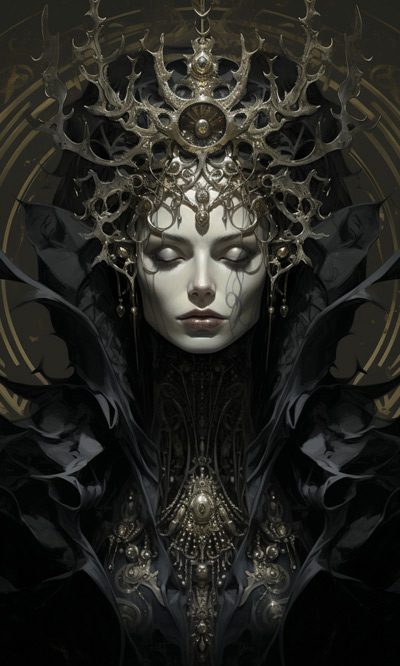 In the necromantic aspect, Bune is perceived as a ‘psychopomp’ — a guide for souls transitioning from the mortal realm to the afterlife.
In the necromantic aspect, Bune is perceived as a ‘psychopomp’ — a guide for souls transitioning from the mortal realm to the afterlife.
Her powers are invoked to break the veil between living and dead, facilitating communication with ancestral spirits and unveiling the mysteries beyond mortal understanding.
This aspect underscores Her authority in matters of death and the hidden knowledge therein, offering practitioners insight into life’s ultimate transition.
Bune’s role in providing wealth and eloquence
Bune’s association with wealth goes beyond mere material accumulation; it extends to the enrichment of the soul and the flourishing of a practitioner’s communicative prowess or eloquence.
Bune grants Her followers the gift of persuasive speech, a valuable asset for both mundane success and spiritual progression.
The invocation of Bune in this context is often aimed at achieving a harmonious balance between prosperity and expressive clarity, enabling Her adherents to navigate the material world with divine wisdom.
Less known aspects of Bune’s influence
Though widely recognized for Her ties to necromancy and wealth, Bune’s influence permeates less known, yet equally significant domains.
Her attributes as a teacher of esoteric knowledge and a harbinger of transformation are celebrated amongst those who delve deeper into Her lore. It’s suggested that Her presence can catalyze personal alchemy, transforming one’s baser instincts into enlightened actions and thought.
Her less explored traits resonate with the seekers of hidden truths, reflecting Her capacity to illuminate the shadowed paths of the human experience – a ‘bringer of light’ – a trait shared with Lucifer, the literal ‘light-bringing morning star.’
Bune in Modern Occultism
The re-emergence of Bune in modern occultism represents a welcome shift in the perception of ancient entities once demonized by the Church and misunderstood by the masses.
In our contemporary occult framework, Bune has been re-evaluated and given Her rightful place as a powerful spiritual ally across various neo-pagan practices, including Wicca, Druidism, and Demonolatry.
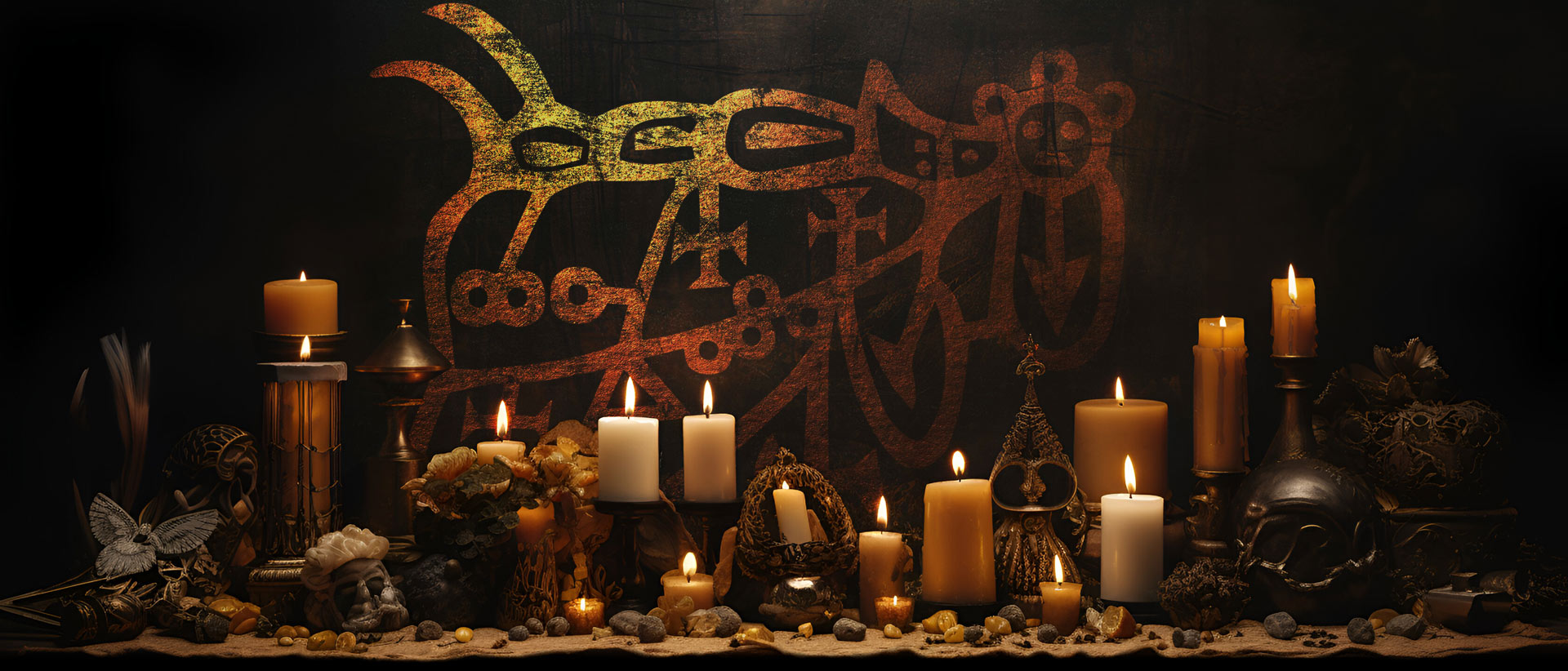
Bune in contemporary occult practices
Bune’s modern appeal lies in both Her versatility and depth as a deity who encompasses the wisdom of the past with the practical needs of the present.
Wiccans honor Bune within their pantheon, celebrating Her as an embodiment of the earth and its abundance.
Druids may see in Bune a connection to the ancestral wisdom and the liminal spaces between worlds.
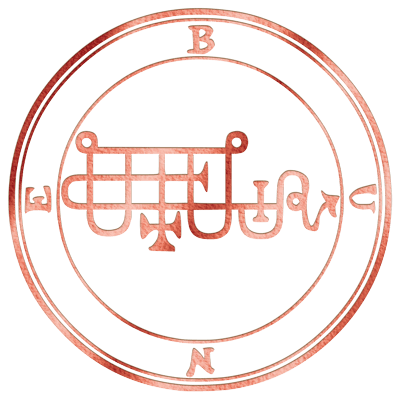 Demonolatry practitioners, diverging from the traditional Abrahamic vilification of demons, approach Her with reverence, seeking spiritual enlightenment, and material assistance.
Demonolatry practitioners, diverging from the traditional Abrahamic vilification of demons, approach Her with reverence, seeking spiritual enlightenment, and material assistance.
These varied traditions show Bune’s resurgence as an entity that has moved beyond the negative connotations of the past to assist those seeking Her guidance in the present.
Bune in the context of modern ethical frameworks
Modern occultism prompts a rethinking of traditional ethics surrounding money and power.
For centuries, religious institutions perpetuated the idea that monetary wealth was innately corrupting, echoing the adage “money is the root of all evil.” This sentiment, however, often cloaked institutional desires to maintain control over spiritual prosperity narratives.
The mischaracterization of entities like Bune as Faustian or diabolical oversimplifies the complex nature of wealth and human desire.
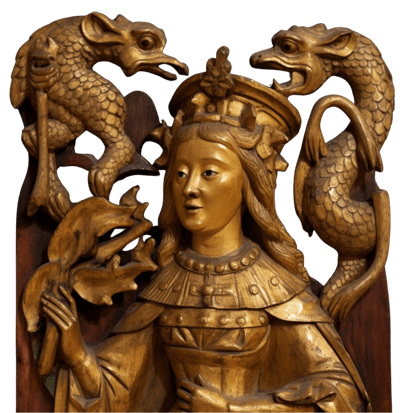 By representing Bune within the context of wealth redistribution and meritocracy, modern occultists have challenged the idea that seeking material abundance is inherently selfish or malevolent. Instead, it can be a force for positive change, personal empowerment, and societal equity.
By representing Bune within the context of wealth redistribution and meritocracy, modern occultists have challenged the idea that seeking material abundance is inherently selfish or malevolent. Instead, it can be a force for positive change, personal empowerment, and societal equity.
In questioning the demonization of wealth-seeking, contemporary occultists have of course noted the contradiction inherent in the wealth of the church and the societal elite.
They point out the hypocrisy of an ideology that venerates wealth in the hands of a few while denouncing it as sinful for the many.
Through Bune, practitioners find a way to balance spiritual and material pursuits, suggesting that when handled with wisdom and responsibility, wealth can offer a life free from unnecessary hardship and provide a path to fulfill one’s true will.
In this light, Bune represents not a temptation towards greed, but an opportunity for growth and equality. Her presence in modern rituals is a call to understand and utilize resources wisely, ensuring that prosperity is not a privilege reserved for a select few but a possibility accessible to all who are willing to engage with the divine with respect and diligence.
Bune in Pop Culture

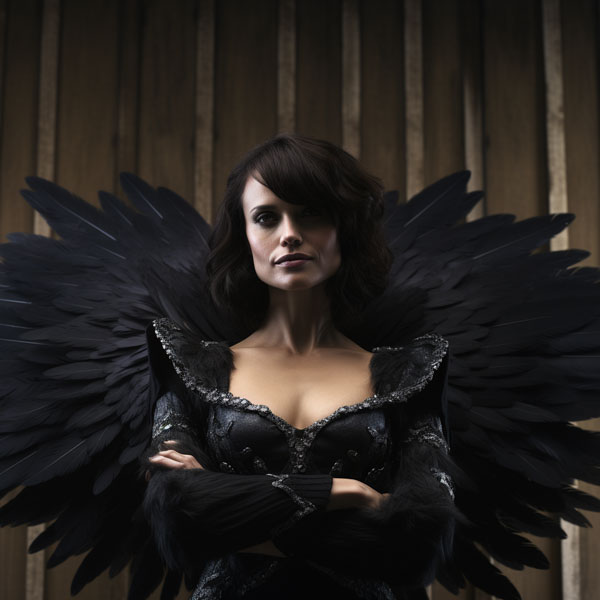 The essense of Bune, whilst never explicitly referred to, can be seen echoed within pop culture.
The essense of Bune, whilst never explicitly referred to, can be seen echoed within pop culture.
The modern entertainment industry frequently borrows elements from ancient myths, religious figures, and spiritual entities to craft compelling narratives and complex characters. Often these characters are shaped to fit the archetypal qualities of deities and spirits like Bune, albeit with a dramatic twist.
Bune’s association with eloquence, wealth, and the necromantic arts lends itself to diverse portrayals in media, ranging from the wise guide to the bearer of Faustian bargains.
Characters in film and literature that mirror the attributes of Bune may not always carry Her name, but their roles often resonate strongly with Her domains of influence. These manifestations are a testament to Her enduring legacy and the depth of Her character as both an archetype and a presence in contemporary storytelling.
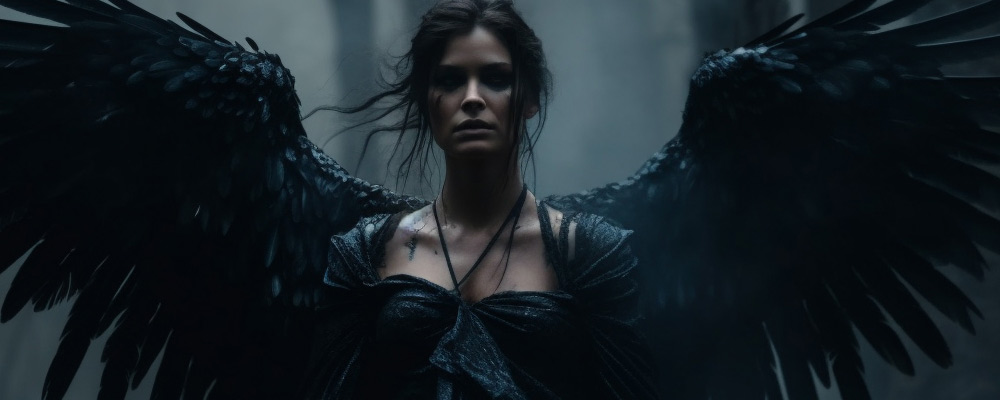
Echoes of Bune in literature, film, music, and media
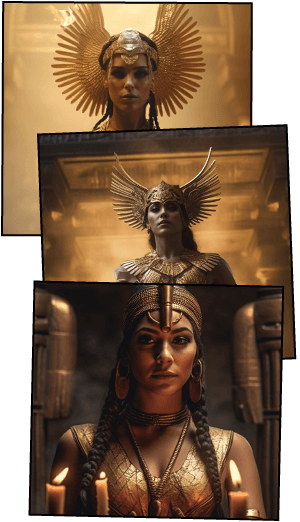 In exploring the impact of Bune within popular culture, we can look to characters and narratives that take the form of Her essence, either explicitly or as thematic parallels.
In exploring the impact of Bune within popular culture, we can look to characters and narratives that take the form of Her essence, either explicitly or as thematic parallels.
From the ambitious figures trading fortunes for their souls in movies to literary characters articulating with persuasive charisma, a Bune-like presence forms an undercurrent in many familiar stories.
A prime example can be found in the character of Robert Johnson in the world of music legend, where the storied crossroads pact aligns with the kind of bargain one might associate with a Bune-like entity.
In literature, the character of Woland from Mikhail Bulgakov’s “The Master and Margarita” portrays a similar Bune-esque figure, offering insights and causing upheavals with a mere turn of phrase.
Other examples include:
“Faust” by Johann Wolfgang von Goethe (Play, 1808): The character of Mephistopheles grants Faust worldly pleasure and knowledge, akin to Bune’s offer of wealth and eloquence, though at a price far steeper than Bune would request. This tale is one of the most direct reflections of the human desire for more than what the natural world offers and the complexity of ‘demonic’ bargains.
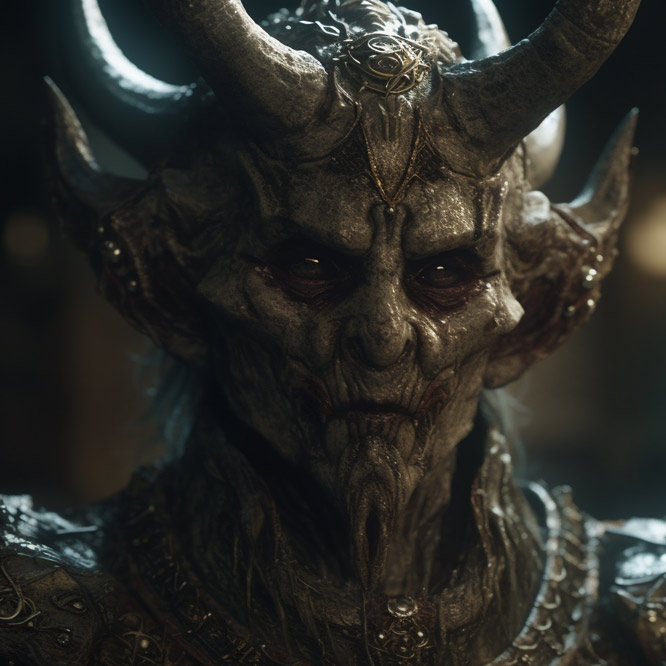 “Lucifer” (TV Series, 2016-2021): The titular character embodies charm, wit, and a certain moral ambiguity while offering favors and making deals, much like Bune is reputed to do.
“Lucifer” (TV Series, 2016-2021): The titular character embodies charm, wit, and a certain moral ambiguity while offering favors and making deals, much like Bune is reputed to do.
“American Gods” by Neil Gaiman (Novel, 2001): The character of Mr. Wednesday has the charm and strategic mind associated with Bune, and the book delves into the concept of old gods in the new world, a narrative reminiscent of Bune’s enduring relevance and active reshaping today.
“Supernatural” (TV Series, 2005-2020): Throughout its many seasons, the series presented various characters who made deals with demons for knowledge, power, or other gains, which is a frequent motif parallell to Bune’s legends.
“Aladdin” (Various renditions in film and literature): The genie offers grand wishes, which can be seen as a less ominous comparison to the granting of desires attributed to spirits like Bune in more positive depictions. This is especially apt given that many believe Bune to have originated in the Middle East as a djinn spirit – the literal origin of the genie.
How these references align or differ from traditional descriptions
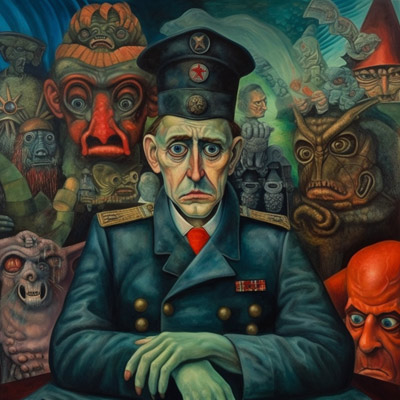 While these cultural references echo core characteristics attributed to Bune, they also illustrate the gradual transformation of Her archetype through the lens of societal beliefs surrounding morality, wealth, and power.
While these cultural references echo core characteristics attributed to Bune, they also illustrate the gradual transformation of Her archetype through the lens of societal beliefs surrounding morality, wealth, and power.
The negative connotations seen in tales of Faustian pacts and deals with the devil often reveal less about the true nature of Bune and more about longstanding prejudices against wealth and the vilification of non-Christian entities.
In analyzing how Bune-like figures are portrayed in pop culture, it becomes evident that these characters are frequently used to play upon fears and fascinations with the ‘other side’ of prosperity — the risks and moral compromises seen in the pursuit of riches.
However, not all references to Bune reflect such a somber view.
Some modern interpretations choose to eschew the demonic trope, instead presenting Bune-inspired characters as nuanced and complex, capable of both darkness and light, reflecting the many dualities found within Her evolving mythos.
Accounts of personal experiences with Bune
Across the many and varied practices of the occult, few entities have garnered as much reverence, awe and positive association as Bune.
Testimonials of those who have called upon Her, a growing library of personal encounters with the Great Duchess of the spiritual realm fill both this website and others. They are testament to Bune’s benevolent nature and Her readiness to assist those who seek Her guidance. From new sorcerers to seasoned practitioners, these subitted experiences share a common thread: Bune’s profound impact on lives and fortunes.
These accounts can be as diverse as they are inspiring, ranging from grand gestures of wealth acquisition to subtle shifts in eloquence and personal charisma. They are stories of transformation — a mirror reflecting the potent force that Bune can unleash, enabling Her adherents to overcome obstacles and achieve a harmonious balance in their pursuit of prosperity and knowledge.
They are tales not just of requests granted but of relationships forged — real-world interactions with a powerful spirit perceived not as a mere provider but as a teacher, an ally, and often, a life-changer.
We share a growing selection of testimonials and success stories on Bune’s Altar.
Through these accounts, it’s easy to see the scope of Bune’s willingness to move proverbial mountains and Her swift responsiveness to the calls of Her devotees.
Working with Bune
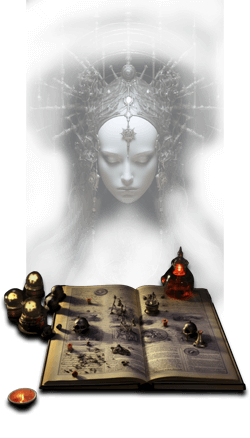 Engaging with the Duchess of Death and Riches, is to step into a universe where ancient wisdom interacts directly with the tangible desires of the present.
Engaging with the Duchess of Death and Riches, is to step into a universe where ancient wisdom interacts directly with the tangible desires of the present.
We offer guidance on how to navigate a path to Bune, one that is respectful of Her grandeur and mindful of the practitioner’s intentions. Those who approach Bune do so seeking Her aid in necromancy, eloquence, and the magnetism of prosperity.
Yet, before one starts on this esoteric path, there are several considerations and protocols it’s advised to heed to ensure a practice that is both safe and honored.
Considerations before engaging with Bune
Venturing into communion with Bune, the Great Duchess of the spiritual realm, is to court a vast power of ancient force, aligning oneself with the flow of cosmic abundance and esoteric knowledge. Such undertakings are not without their risk or need for due diligence. Here are several considerations before engaging with Bune:
 Self-Reflection:
Self-Reflection:
Before reaching out to Bune, it is important for practitioners to engage in deep self-reflection. Understanding one’s own motives is essential — whether seeking guidance, assistance, or a general enhancement of one’s life. The call to Bune should ideally come from a place of need rather than want, a recognition of sufficiency over surplus.
Preparation of Space and Mind:
The sanctity of the ritual space and the clarity of the mind are both paramount to some. Your environment may be cleansed and consecrated, a sanctuary worthy of a Duchess’s visit. Mental preparation through meditation can help focus intention and build a spiritual resonance with Bune’s energy.
Knowledge and Research:
Understanding Bune’s historical context, attributes, and traditional rituals associated with Her can be core to success. A practitioner should be well-read on Her origins, influences, and the evolution of Her worship to appreciate the depth of their engagement with Her.
Moral and Ethical Alignment:
Align your request with moral and ethical considerations. The relationship with Bune is one of exchange and respect. Requests should align with a broader understanding of balance and the potential repercussions of one’s desires.
Whilst we don’t follow the belief that asking for physical wealth is inherently bad, the way we as a people react to having wealth can be harmful, with excess wealth often leading to boredom, complacency, lack of direction, depression and addiction.
Cultural Sensitivity:
Be mindful of the cultural origins of the practices and traditions you are engaging with. Respect for the provenance of occult knowledge can underpin successful and respectful practice.
Emotional Readiness:
The work with any spiritual entity, especially one as potent as Bune, can be emotionally taxing. Practitioners should assess their emotional resilience and preparedness for potential outcomes, both expected and unforeseen. Bune can test Her followers – be ready for this.
Physical Offerings:
Consider the nature of physical offerings carefully. Offerings to Bune should not be made frivolously; each item presented should be thoughtfully chosen and charged with intention, reflective of Bune’s preferential tastes and historical offerings. Or alternatively you can go with the flow and ‘feel’ what She would like.
Spiritual Protection:
Before performing any ritual, protective measures may be advisable. We find Bune’s Enn to be sufficiant in most cases as it immediately transfers Bune’s protective forces upon the caster, however there are others who operate from a perspective of fear and will typically require more significant protection. This can involve casting circles, invoking protective spirits, or employing talismans. Protection ensures that only the intended energies are drawn into the space and that malevolent forces are kept at bay.
Taking these considerations to heart, a practitioner may proceed with a well-grounded and respectful approach to the ritual at hand, setting the stage for a fruitful and harmonious interaction with Bune.
Guidelines for respectful and safe practice
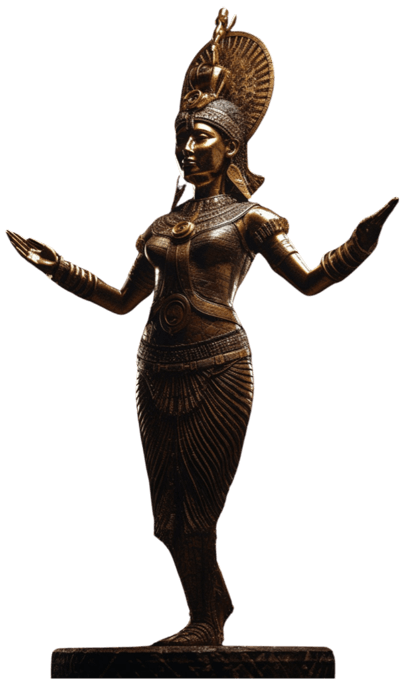 Engaging with Bune, or any spiritual entity, demands not only a respect for the entity’s power and history but also an adherence to protocols that ensure the safety and sanctity of the practice.
Engaging with Bune, or any spiritual entity, demands not only a respect for the entity’s power and history but also an adherence to protocols that ensure the safety and sanctity of the practice.
Here are further guidelines for maintaining a respectful and safe engagement:
Formality in ritual:
Many find it best to adhere to a structured ritual practice that honors traditional forms while allowing for personal authenticity in their worship. This will vary based on their occult tradition.
Clarity of desire:
Your requests should be made clear and articulate, avoiding vague ambitions. Ambiguity can lead to unexpected results and miscommunications in the spiritual realm. “Being rich” is ambiguous. “$4213 by the end of the month to pay off my credit card” is less so.
Emotional Stability:
Again we are emphasizing the need for emotional steadiness – due to some of the activities associated with Bune, it’s important to enter into these practices in a state of emotional calm and resilience. Necormancy works can themselves bring about longstanding periods of depression and anxiety, so this could be catastrophic if the practitionaer was already in a less than perfect state of mind.
Post-Ritual Grounding:
Following any engagement with Bune, it’s important to properly close the ritual, give thanks for Her presence and assistance, and ground yourself. Some shower, some go outside and breathe fresh air, others will turn to a wholly different mindset by watching a funny show, or movie.
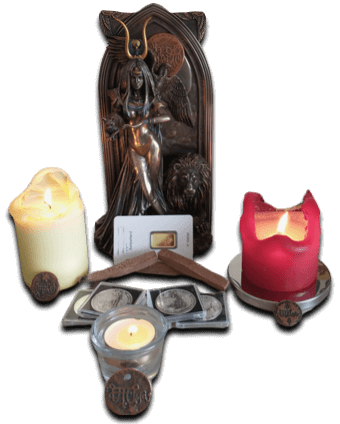 Disposal of offerings:
Disposal of offerings:
Dispose of or consume the physical offerings in a way that is respectful to the entity and the environment.
Continuous Learning:
Continue to learn about Bune and deepen your understanding over time. To use a cliche, occult practice is a journey, not a destination, and your relationship with Bune will evolve with study and regular interaction.
By adhering to these guidelines, you ensure a practice that is respectful to Bune, safe for you and those around you, and conducive to a positive and enlightening experience.
Rituals and offerings associated with Bune
For those seeking Bune’s favor, offerings are a tangible means to express reverence and gratitude.
Bune’s palate favors the sharp zest of bitter black coffee, the sweetness of Turkish delight and Baklava, and the complex notes of sweet red wine or sangria.
She also revels in creative tributes: paintings and artwork, handcrafted soaps embedded with vibrant herbs, incense carrying the intoxicating blend of jasmine with oud and sandalwood or the richness of amber with musk.
The Duchess also loves the spirited warmth of rum, the freshness of oranges and other citrus fruits, or a glass of revitalizing orange juice as appropriate offerings. We find triple-sec or other orange liqueurs to go down well too.
To engage with Bune is to offer more than mere material gifts; it can be to share one’s own artistry and zeal for life.
The rituals associated with Her are steeped in richness, reflective of Her domains in death and fortune. As such, any creative endeavor or artifact produced with genuine effort and respect can form a valued offering at Her altar.
We provide a number of proven and highly effective rituals and many of these include simple offerings in their instructions.
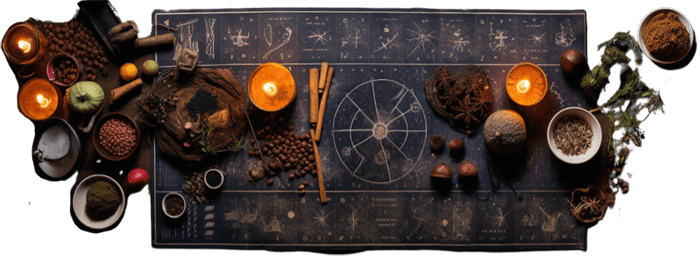
Bibliography / Further Reading
1. “The Lesser Key of Solomon” by S.L. MacGregor Mathers and Aleister Crowley (1904)
- Annotated by: Joseph H. Peterson (2001)
- This classic text includes a section known as the “Ars Goetia,” providing descriptions of the 72 demons listed in the Solomonic texts, including Bune. Peterson’s edition offers modern readers annotations and insights into the historical context and practical usage of the text.
2. “Demons of Magick: Three Practical Rituals for Working with The 72 Demons” by Gordon Winterfield (2017)
- This book aims to simplify the complexities of demonological practices, providing clear rituals for safely working with demonic entities, with emphasis on practical outcomes and safety considerations for Bune.
3. “The Complete Book of Demonolatry” by S. Connolly (2006)
- Connolly’s work is a comprehensive guide for those practicing or interested in demonolatry. It covers the respect and reverence given to entities like Bune and the practical aspects of demonolatry rituals.
4. “The Goetia of Dr. Rudd” by Dr. Thomas Rudd, Edited by Stephen Skinner and David Rankine (2007)
- This edition of the Goetia includes annotations and additional insights by Dr. Rudd, a scholar on magic from the 17th century, offering a more academic perspective on the entities, including Bune.
5. “Practical Sigil Magic: Creating Personal Symbols for Success” by Frater U∴D∴ (2012)
- A book focusing on the creation and usage of sigils, often used in working with entities such as Bune for the fulfillment of personal goals.
6. “Pagan Portals – The Morrigan: Meeting the Great Queens” by Morgan Daimler (2015)
- Although not directly about Bune, this book delves into the understanding of multifaceted deities, providing a framework that can be applied to the study of Bune’s historical and cultural significance.
Online Resources and Communities
1. Sacred Texts Archive – Goetia:
- www.sacred-texts.com/grim/lks/index.htm
- A digital library that provides free access to a wide range of sacred texts, including “The Lesser Key of Solomon” with the section on the Ars Goetia.
2. The Hermetic Library:
- hermetic.com
- An online collection that features extensive information and literature on Hermeticism, the occult, and ceremonial magic.
3. Demonolatry.org:
- demonolatry.org
- A resource for those interested in the study and practice of demonolatry, including forums and writings on demonology and pagan practices.
4. Studio Arcanis:
- studioarcanis.com
- A forum dedicated to the discussion of magic, where users can exchange information and personal experiences with entities like Bune.
5. Become a Living God:
- becomealivinggod.com
- Another forum dedicated to magic with a focus on atheistic and theistic demonolatry, including detailed information and a wide range of personal experiences / testimonials surrounding work with Bune.
6. Eclectic Witchcraft:
- eclecticwitchcraft.com/bune/
- A hughly personalized take on working with Bune as a witch, combining both well-researched facts and personal experiences into an interesting take on a benevolent Bune.
7. The Spartanite:
- thespartanite.com
- Another personalized viewpoint on focused working with Bune, combining facts and personal experiences into a unique take, with a strong focus on Bune’s aid in raising charisma and Her less well-known strengths for increasing femininity, attractiveness and self-worth.
8. Reddit Communities:
- r/occult: reddit.com/r/occult – also r/DemonolatryPractices
- Subreddits where users discuss various aspects of the occult, including Goetic magic and demonolatry.
9. YouTube Channel – Indigo Princess:
- @officialindigopriestess94
- Indigo Princess is a first port of call for many Bune-curious investigations and was one of the first channels to popularize working with Bune on the YouTube platform.
10. YouTube Channel – Elwynn the Witch:
- @ElwynnTheWitch
- An excellent occult channel focused on witchcraft, but with some very good content focused on Bune from the context of a working witch, rather than the far more common demonolatry practice.
11. YouTube Channel – Go Virtual Lucifera:
- @govirtuallucifera6623
- Another one of the first YouTube channels looking at the practice of demonolatry, with good content on working with Bune and Bune’s enns.
12. YouTube Channel – Black Witch Coven:
- @Blackwitchcoven
- A channel devoted to demonolatry through the framework of witchcraft with a regular focus on money magic and working with Bune for financial success and increased prosperity.
13. YouTube Channel – The House of Magic:
- @TheHouseofMagick
- This useful channel contains lots of practical spellcraft and a number of simple but effective rituals including several working with Bune.
These resources are a good starting point for anyone interested in furthering their understanding of Bune within the context of various esoteric traditions.
